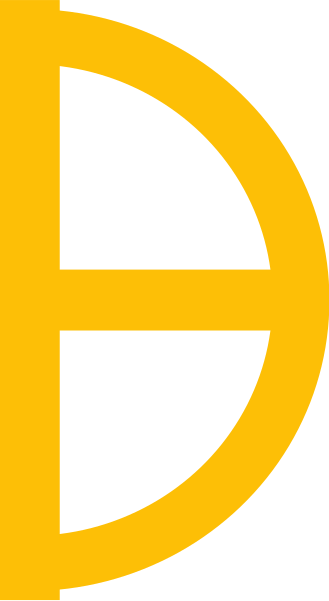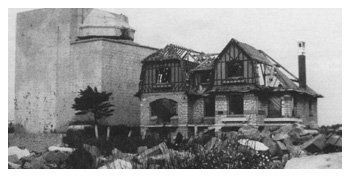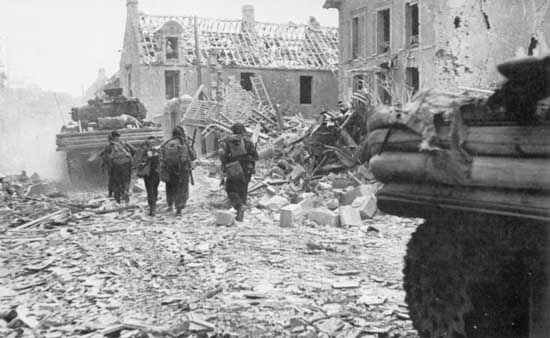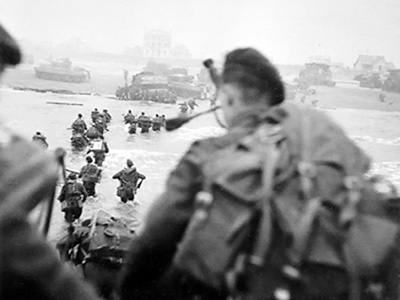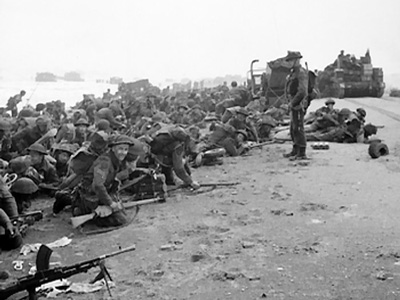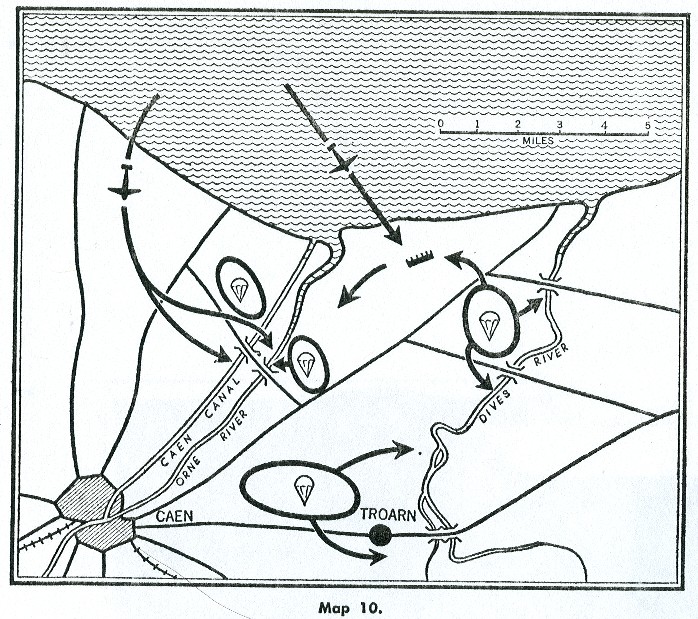D-Day: Sword Beach at Kapiti Wargames Club Open Day 2014.
We are barely 3 weeks out from the 70th anniversary of the D-Day Landings on 6 June 2014.
I have been preparing for several months for a large-scale 20mm Flames of War game. The boards are painted and flocked, most of the troops, armour and planes ready, bar some national markings that got left off. Anyhow we loaded the boards and miniatures and headed off to Paraparaumu. Unfortunalely quite a few of our Generals, experienced and otherwise had to pull out either due to business or family commitments.
Les could only make it for the opening volleys of the game, and had to leave early. Others could not make it at all. Suitable replacements were found, never the less, and a great day of gaming was had by all!
Protagonists at Sword Beach
Allied forces attacking Gold, Juno, and Sword Beaches faced
German units of LXXXIV Corps under General der Artillerie Erich Marcks:
- 716th (Static) Infantry Division under Generalleutnant Wilhelm Richter. At 7,000 troops, the division was significantly understrength, and included Ost Truppen, Soviet PoWs who elected to serve in German Uniform rather than go to PoW camps.
- 736th Infantry Regiment
- 1716th Artillery Regiment
- 21st Panzer Division under Generalmajor Edgar Feuchtinger: Included 146 tanks and 50 assault guns, plus supporting infantry and artillery.
British and Canadian zones (The latter landed at Colville, ignored for purposes of this game)
Royal Marines Commandos attached to 3rd Infantry Division move inland from Sword Beach, 6 June 1944
Commander, Second Army (Britain and Canada): Lieutenant General Sir Miles Dempsey
Overall, the Second Army contingent consisted of 83,115 men, 61,715 of them British. The nominally British air and naval support units included a large number of personnel from Allied nations, including several RAF squadrons manned almost exclusively by overseas air crew.
.jpg)

3rd Infantry Corps Insignia
- British I Corps, commanded by Lieutenant General John Crocker
- British 3rd Infantry Division: Major General Tom Rennie

- British 6th Airborne Division: Major General R.N. Gale
- 79th Armoured Division: Major General Percy Hobart
Facing the landing beaches from the sea: Ouistreham, Lion-sur Mer and farms outside Hermanville-sur-mer in the Distance. The German HQ is situated in the Casino Riva Bella, with the artillery observation tower at left (Allied and German objective) LeFH 18 battery at Hermanville, protected by Flak 38 and Pak 40, Vierling Flak on Halftrack. The road from Hermanville runs down the centre, with the road to Merville leading off the board to the left, Luc -sur-Mer to the right. Heavy MGs on Pillbox and bunker
Luc-sur-Mer, with artillery emplacement (88mm) and 75mm turret bunker (Right), Ost truppen dug in (The weakest link) Heavy MG in pillbox. Road to Lion-sur-Mer and Ouistreham to left, Colville to right.
Nebelwerfer rocket artillery in the fields beyong Luc-sur-Mer (substituting for Wurframen static rockets, as I have none), again supported by an 88 and a 37mm Flak on a halftrack.

Ouistreham harbour and fuel Deport (Objective 2) Protected by Light (bipod) and heavy (Pillbox) MG, 20mm twin AA gun and Flak Vierling, Ost Truppen of 716 Div.
Rockets at the ready, some Ost Truppen to protect the artillery, and the Luftwaffe half-heartedly manning their 88mm Flak
Heer (Wehrmacht) Artillery. They accounted for more Allied casualties in WW2 than all the Tiger tanks put together. In this case LeFH18 (Light Field Howitzers) 105 mm guns.
The Guns of Merville Battery: Objective 3: 6th Airborne: Parachute brigade
Pegasus Bridge (Orne River): Objective 4: 6th Airborne: Air landing Companies
22nd Dragoons Sappers (Demolition teams) are the first to land
RAF supplying areal support with Hawker Typhoons. Nick, the Supreme Allied commander rains rockets on the dug in Germans of 716. Infaterie Div.
AVRE Bunker-busters, Hobart's "Funnies" arrive at long last to swiftly clear the defenses at Luc-sur-Mer
LCVPs and DUKWs landing more sappers at Lion-sur-Mer. Unfortunately for them within range of the Nebelwerfers and the heavy machine-guns
Stugs of the 21. Panzerdivision arrive via Hermanville en route to Lion-sur-Mer, and Ouistreham
Yours truly deploying the 21.Pz Division Stug platoon
Sherman wade ashore near the Casino
The second wave of Allied Commanders achieve a break-through at Luc-sur-Mer. The Allies suffered an unusually high rate of casualties amongst both commanders and field officers.
Supreme Commander Nick urging his generals to increased efforts. He ascribed the high rate of loss of field officers to the Germans being instructed to pick out the British officers.
Hobart's funnies, Shermans and Wolverines pouring from assaulting landing craft and into the gap created by the Dragoon Sappers, but too little, too late ?
Strange how games and history often reflect what actually happened given a well written rule set.
The Allies knew that the Germans would be a hard nut to crack!
Full Batrep to follow...
Generals Repose: Nick and Sam havin' a break at the end of the day


